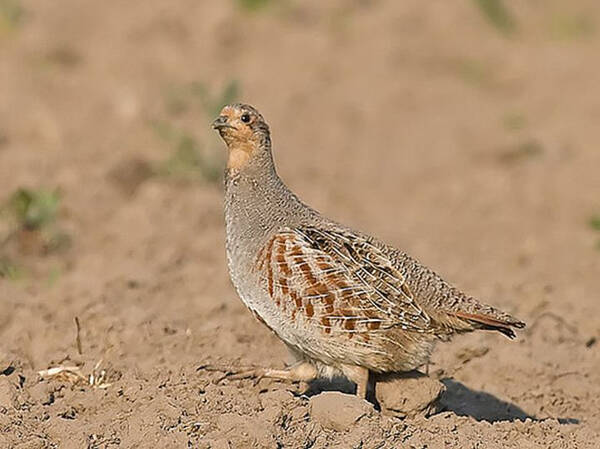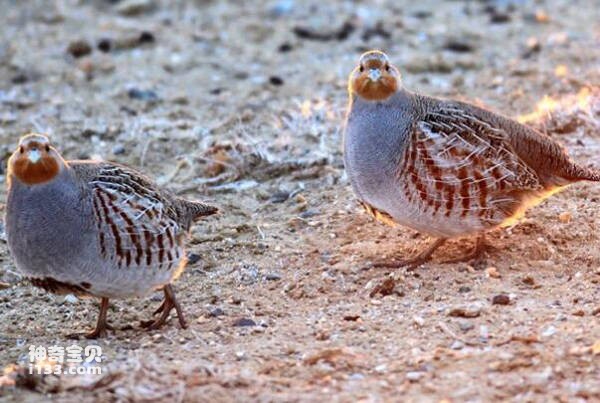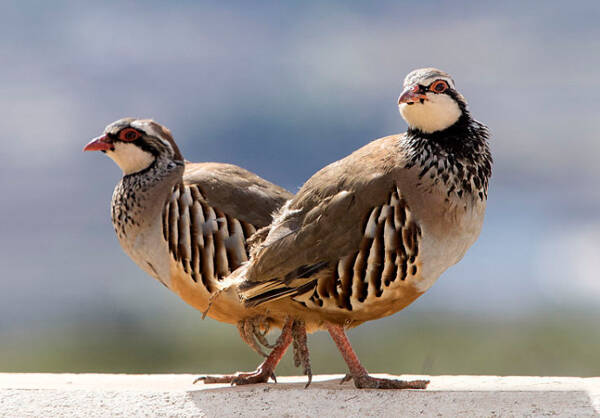Perdix perdix
IUCN
LCBasic Information
Scientific classification
- name:Perdix perdix
- Scientific Name:Perdix perdix,Grey Partridge
- Outline:Landfowl
- Family:Chickeniformes P.family Partridge
Vital signs
- length:15-31cm
- Weight:290-405g
- lifetime:No textual research information is available
Feature
It is a medium sized grayish brown quail
Distribution and Habitat
It is distributed in Albania, Andorra, Armenia, Austria, Azerbaijan, Belarus, Belgium, Bosnia and Herzegovina, Bulgaria, Canada, China, Croatia, Czech Republic, Denmark, Estonia, Finland, France, Germany, Greece, Hungary, Iran (Islamic Republic of), Ireland, Italy, Kazakhstan, Latvia Latvia, Lithuania, Luxembourg, Macedonia, Moldova, Montenegro, Netherlands, Norway, Poland, Romania, Serbia, Slovakia, Slovenia, Spain, Sweden, Switzerland, Turkey, Ukraine, United Kingdom, Uzbekistan.
Possible extinction: Portugal. Regional extinction: Liechtenstein. Occasionally: The United States. Traveler: Cyprus.
In China, it is only distributed in Tacheng and Junggar Basin in northwestern Xinjiang.
Gray partridge lives in various habitats such as low mountain hills, mountain plains and high mountains. In summer, it is mostly found in mountain stony slopes, plateau grasslands with sparse trees and shrubs, or in mountain gullies, river banks, lake shrubs and mountain fields. In winter, it is o
Appearance
Grey partridge male adult bird: dark grayish-brown on the head, pillow and hind neck, with brown-white plumage, the ends of which are often enlarged into points; Brown on forehead, eye first, upper eye line and both sides of head; A small dark spot at the base of the forehead, between the nostrils; The ear feathers are chestnut brown, with light yellow stripes. Both sides of upper back, lower neck and forechest are gray, mixed with brown; Some feathers have subterminal stripes. The rest of the dorsal body is brown; With fine streaks of grayish black beetles, interspersed with neatly arranged maroon stripes; The transverse spots of the overlying feathers on the tail are thinner but wider, the surface of the central three pairs of tail feathers is the same color as the back, the rest of the tail feathers are pure chestnut, and the broad secondary tip spots are darker chestnut. The shoulder and wing overlying feathers, the tertiary flight feathers and the back small overlying feathers are
Details
Grey Partridge (Perdix perdix) is known as Grey Partridge and has eight subspecies.

Gray partridge usually flocks except during the breeding season. Either a family group or a larger group consisting of a family group. They usually live in groups of 5 to 15 animals. The male quack, ki-errr-ik, ki-errr-ik, with the stress on errr. Lively disposition, good at running and hiding. Make a low grrree-grrree call when driven away. It flies fast and in a straight line, but usually does not fly far before falling into grass or brush on the ground. Takeoff often chirps loudly. Flying is not high, often close to the ground flight, two wings incited quickly, and issued a clear wing sound.
Grey partridge feeds mainly on plant foods such as shoots, young leaves, buds, flowers, fruits, seeds, etc. of herbs and shrubs. It also eats crops such as grains, especially in autumn and winter, and often forages in agricultural fields. It also eats small spineless movers and insects such as grasshoppers, locusts, and crickets, especially in summer. Foraging mainly in the morning and evening, at noon more rest in the shade.

In January-February every year, individual quails have begun to call for mating. Courtship shows usually take place in the morning before the sun rises. The male bird keeps leaping upward while making excited calls, and the female bird keeps calling back and approaching the male, who then jumps on the female's back to mate. Mating can continue until June. The pair is one female and one male, and when the pair is formed, the male and female birds leave the group in pairs.
The grey partridge nests in the plains, valleys, streams, hay meadows, grassland young forest and mountain forest, thicket areas rich in brush and wormwood. The nest is mostly placed on the ground in tall grass or under brush, with shrubs and grass hiding, generally difficult to find. Male and female birds often nest together. The structure of the nest is very simple, mainly in the soft ground hollow dug a shallow pit, padded with hay, moss and feathers. Each clutch lays 10-20 eggs, up to 26 eggs. Eggs are usually laid one a day. The eggs are gray or gray-green in color, 32-39×24-29 mm in size, and 9-13 grams in weight. Incubation is shared between male and female birds, or the female incubates the eggs and the male guards the nest area. Female birds have a strong nest love. The incubation period is 21-26 days, and the chicks can move with their parents on the day they hatch, and live in pairs or small family groups until autumn.

It was included in the List of Beneficial Terrestrial Wildlife under State Protection or of Important economic and scientific research Value issued by the State Forestry Administration of China on August 1, 2000.
Listed on the International Union for Conservation of Nature (IUCN) 2013 Red List of Threatened Species ver3.1 - Not Threatened (LC).
Protect wild animals and eliminate wild meat.
Maintaining ecological balance is everyone's responsibility!








